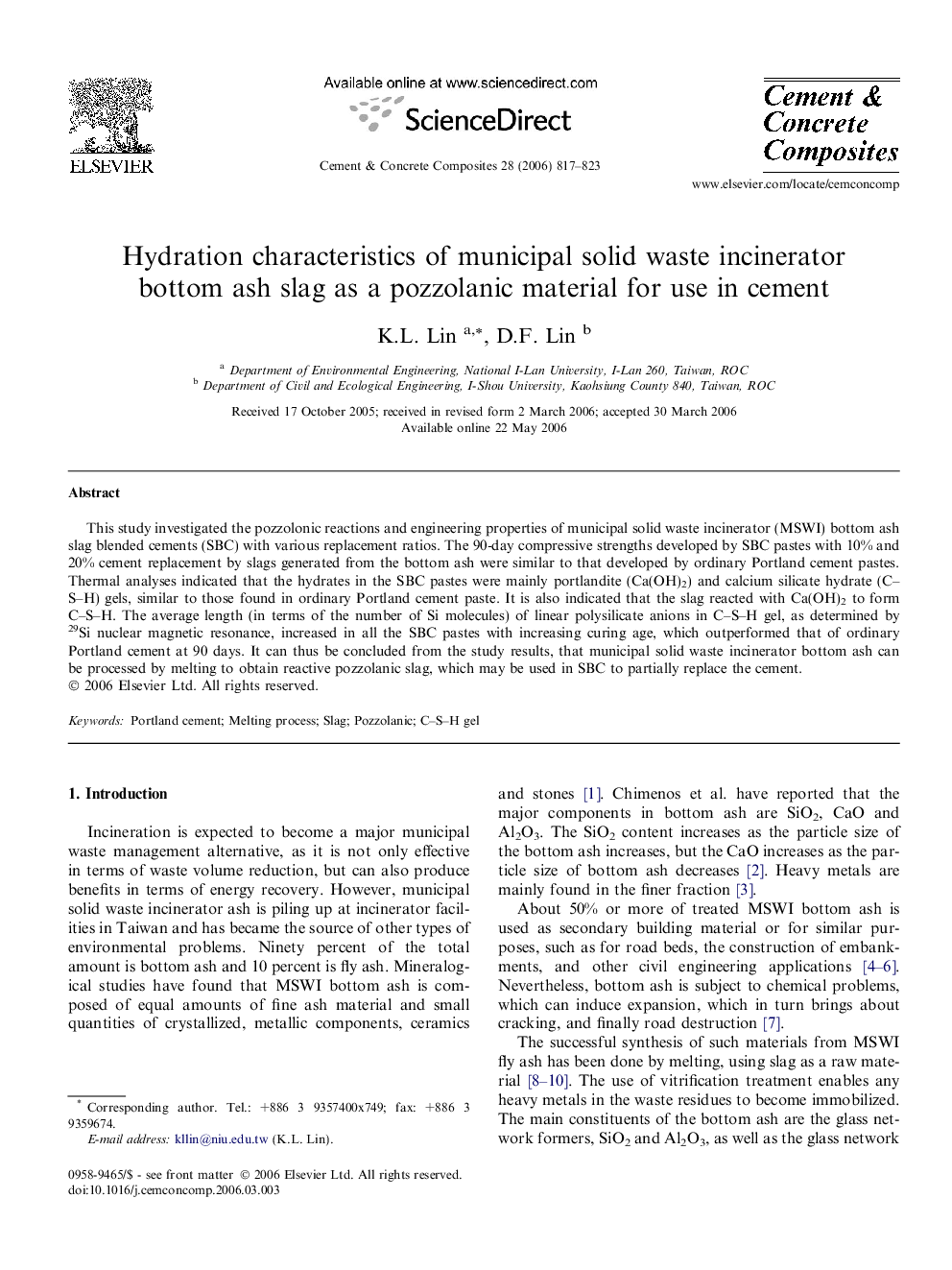| Article ID | Journal | Published Year | Pages | File Type |
|---|---|---|---|---|
| 1455798 | Cement and Concrete Composites | 2006 | 7 Pages |
This study investigated the pozzolonic reactions and engineering properties of municipal solid waste incinerator (MSWI) bottom ash slag blended cements (SBC) with various replacement ratios. The 90-day compressive strengths developed by SBC pastes with 10% and 20% cement replacement by slags generated from the bottom ash were similar to that developed by ordinary Portland cement pastes. Thermal analyses indicated that the hydrates in the SBC pastes were mainly portlandite (Ca(OH)2) and calcium silicate hydrate (C–S–H) gels, similar to those found in ordinary Portland cement paste. It is also indicated that the slag reacted with Ca(OH)2 to form C–S–H. The average length (in terms of the number of Si molecules) of linear polysilicate anions in C–S–H gel, as determined by 29Si nuclear magnetic resonance, increased in all the SBC pastes with increasing curing age, which outperformed that of ordinary Portland cement at 90 days. It can thus be concluded from the study results, that municipal solid waste incinerator bottom ash can be processed by melting to obtain reactive pozzolanic slag, which may be used in SBC to partially replace the cement.
